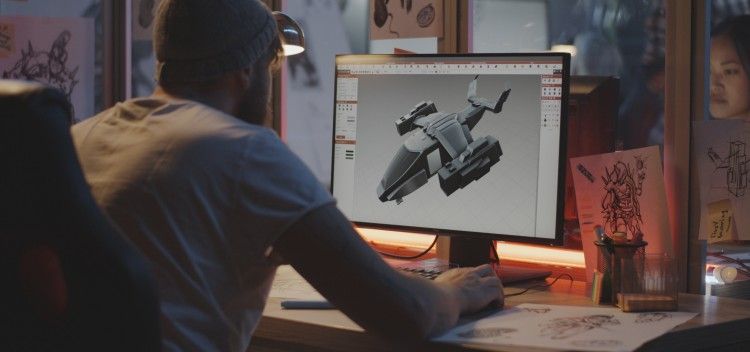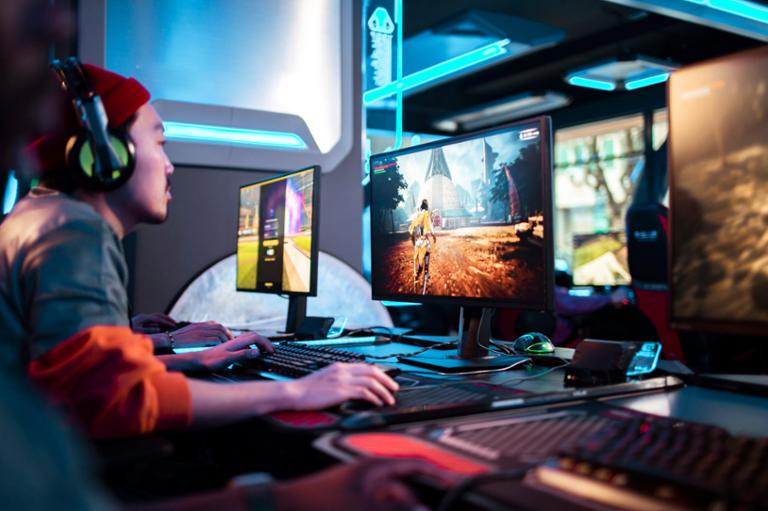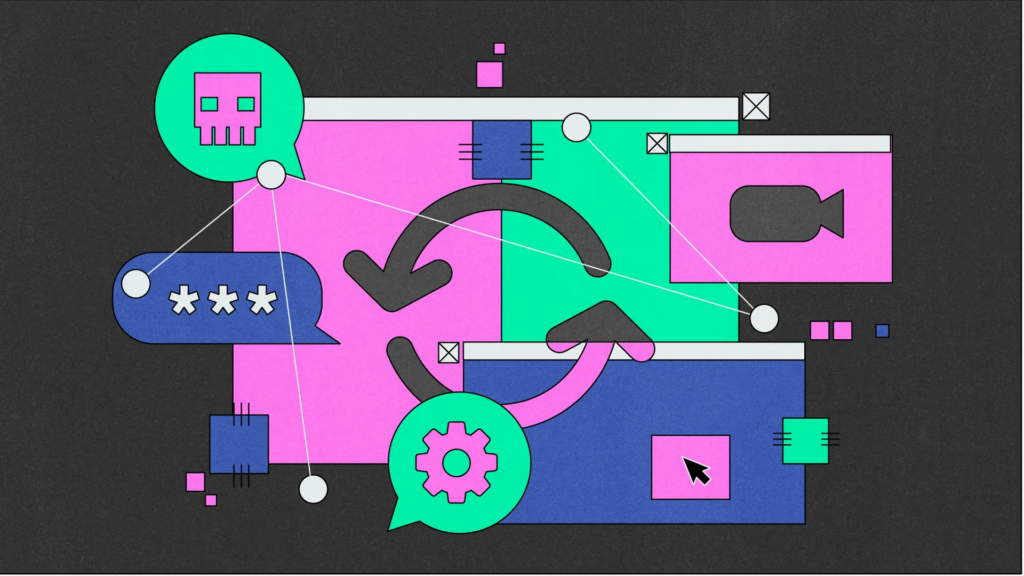3D game development refers to the process of creating video games that feature three-dimensional graphics and environments. It involves designing, modeling, texturing, animating, and programming the various elements of a game to create an immersive and interactive experience for players.
Here is a general overview of the steps involved in 3D game development:
- Concept and Design: The first step is to conceptualize the game idea and design its mechanics, gameplay features, characters, and environments. This includes creating a game design document (GDD) that outlines the overall vision and specifications of the game.
- Game Engine Selection: Choose a suitable game engine that provides the necessary tools and capabilities for developing a 3D game. Popular game engines include Unity, Unreal Engine, and CryEngine.
- Asset Creation: Create or acquire the 3D models, textures, animations, and audio assets required for the game. This involves using specialized software like Blender, 3ds Max, Maya, or ZBrush to design and model the game objects.
- Environment Creation: Design and build the game environments, including landscapes, structures, props, and other interactive elements. These environments can be created using a combination of modeling, sculpting, and terrain editing tools available in the chosen game engine.
- Character Creation: Create 3D character models, rig them with skeletons, and animate their movements and behaviors. This step also involves designing their textures and defining their interactions with the game world.
- Gameplay Programming: Implement the game’s mechanics, controls, artificial intelligence, physics simulations, and other interactive features using a programming language supported by the game engine (e.g., C#, C++, or a visual scripting system).
- User Interface (UI) Design: Design and implement the user interface elements, such as menus, HUDs (heads-up displays), and interactive elements that allow players to navigate and interact with the game.
- Sound and Music: Incorporate sound effects and music into the game to enhance the overall experience. This includes creating or acquiring appropriate audio assets and implementing them using the audio tools provided by the game engine.
- Testing and Debugging: Perform thorough testing to identify and fix bugs, optimize performance, and ensure the game functions as intended. This involves playtesting, quality assurance, and iterating on the game based on user feedback.
- Publishing: Prepare the game for distribution on the desired platforms, such as PC, consoles, or mobile devices. This may involve optimizing the game for different hardware specifications, complying with platform-specific guidelines, and setting up the necessary distribution channels (e.g., app stores or online marketplaces).
It’s important to note that 3D game development is a complex and multidisciplinary process that often involves collaboration among artists, programmers, designers, sound engineers, and other specialists. The specific details of the development process can vary depending on the scope and complexity of the game being developed.

Full Cycle Game Development
Full cycle development, also known as full-stack development or end-to-end development, refers to the process of developing a software application or system from inception to deployment, including all the stages in between. It involves handling all aspects of the development process, including front-end development, back-end development, and other related tasks.
Here is a breakdown of the stages involved in full cycle development:
- Requirements Gathering and Analysis: This stage involves understanding the project requirements, goals, and desired functionalities. It includes gathering user stories, conducting meetings with stakeholders, and performing a detailed analysis of the project scope.
- System Design: Based on the requirements gathered, the system design phase involves creating the overall architecture and design of the software application. This includes designing the user interface (UI), database structure, and determining the technology stack and frameworks to be used.
- Front-End Development: Front-end development focuses on building the user-facing components of the application. It involves writing code for the user interface using web technologies such as HTML, CSS, and JavaScript. Front-end developers ensure that the application is visually appealing, interactive, and user-friendly.
- Back-End Development: Back-end development involves building the server-side components and logic of the application. It includes designing and implementing the application’s business logic, data processing, APIs, and database management. Back-end developers typically use languages and frameworks like Python, Java, Node.js, or Ruby on Rails.
- Integration and Testing: This phase involves integrating the front-end and back-end components, ensuring they work together seamlessly. Developers perform unit tests, integration tests, and system tests to identify and fix any issues or bugs. Automated testing and continuous integration tools may be used to streamline this process.
- Deployment and Hosting: Once the application is thoroughly tested, it is deployed to a production environment. This stage involves setting up servers, configuring the infrastructure, and deploying the application to a hosting platform or cloud service. Continuous integration/continuous deployment (CI/CD) practices are often used to automate the deployment process.
- Maintenance and Updates: After the application is deployed, ongoing maintenance is required to ensure its smooth operation. This includes monitoring, bug fixes, performance optimizations, security updates, and implementing new features or enhancements based on user feedback or changing requirements.
Throughout the full cycle development process, collaboration and communication among team members, including developers, designers, testers, and project managers, are crucial to ensure a successful outcome. Agile methodologies, such as Scrum or Kanban, are often employed to facilitate iterative and incremental development, enabling faster delivery and flexibility in adapting to changes during the development process.
3D ART
3D art, also known as three-dimensional art, refers to artistic creations that have depth and occupy physical or virtual space. It involves the use of computer graphics software or traditional sculpting techniques to create objects, characters, environments, and visual effects that appear three-dimensional.
Here are some key aspects and techniques related to 3D art:
- Modeling: 3D modeling is the process of creating a three-dimensional representation of an object or character. Artists use specialized software like Blender, Maya, 3ds Max, or ZBrush to create models by manipulating vertices, edges, and faces to define the shape and form. There are different types of modeling techniques, including polygonal modeling, sculpting, and procedural modeling.
- Texturing: Texturing involves applying images or patterns to the surfaces of 3D models to enhance their appearance and realism. Artists use texture painting tools to create and edit textures, which can include color, specular, bump, normal maps, and more. This process adds details like skin textures, fabric patterns, or surface imperfections to make the models visually appealing.
- Lighting and Rendering: Lighting plays a crucial role in creating a realistic 3D scene. Artists set up virtual light sources, adjust their intensity, color, and position to achieve the desired visual effects. Rendering involves the process of generating the final 2D images or animations from the 3D scene using rendering software. The rendering process considers lighting, shadows, reflections, and other visual properties to produce the final output.
- Animation: Animation brings 3D models to life by creating movement and dynamic behavior. Artists use keyframe animation, skeletal animation, or procedural animation techniques to define the motions of characters, objects, or environments. They manipulate the model’s skeleton or create a sequence of poses over time to create smooth and realistic movements.
- Visual Effects (VFX): Visual effects are used to enhance the overall visual impact of 3D scenes. This can include particle systems for creating smoke, fire, or explosions, dynamic simulations for cloth or fluid behavior, and post-processing effects like depth of field, motion blur, or color grading. VFX artists use specialized software and techniques to create and integrate these effects into the 3D environment.
- Virtual Reality (VR) and Augmented Reality (AR): 3D art has also expanded into the realm of virtual reality and augmented reality experiences. Artists create immersive 3D environments or objects that users can interact with in virtual or augmented reality applications. This involves considerations for scale, user perspective, and user interactions within the virtual or augmented space.
The field of 3D art is vast and encompasses a wide range of styles, techniques, and applications. 3D artists can specialize in areas such as character modeling, environment design, architectural visualization, product visualization, or visual effects for films and games. Continuous learning, practice, and exploration of new tools and techniques are essential for 3D artists to stay up to date with the latest advancements in the industry.
Regenerate response
AAA ART
AAA art, in the context of video game development, refers to high-quality artwork and visual assets that are created for AAA (triple-A) games. AAA games are typically characterized by their large budgets, extensive development teams, and high production values. The term “AAA” is often used to denote games that are expected to be top-tier in terms of graphics, gameplay, and overall polish.
AAA art encompasses various aspects of visual design and creation within a game, including:
- Environment Art: This involves creating detailed and visually appealing game environments such as landscapes, cities, interiors, and other immersive settings. Environment artists focus on creating realistic or stylized assets, textures, lighting, and atmospheric effects to bring the game world to life.
- Character Art: Character artists are responsible for designing and creating visually captivating and expressive characters, whether they are human, humanoid, or fantastical creatures. This includes character modeling, texturing, rigging, and animating to ensure that characters have a lifelike appearance and move realistically.
- Concept Art: Concept artists create initial visual designs and illustrations that serve as a foundation for the game’s art direction. They help define the look and feel of the game’s characters, environments, props, and overall visual style. Concept art is crucial in establishing the visual identity of the game and guiding the work of other artists.
- Visual Effects (VFX): VFX artists specialize in creating stunning visual effects that enhance the game’s graphics and immerse players in the game world. This can include effects such as explosions, fire, water, smoke, magic spells, and particle systems that add dynamism and realism to the game environment.
- UI/UX Design: User interface (UI) and user experience (UX) designers focus on creating intuitive and visually appealing interfaces that facilitate player interaction with the game. This includes designing menus, HUDs (heads-up displays), icons, and other graphical elements that provide information and enhance the overall user experience.
- Cinematics and Cutscenes: AAA games often feature elaborate cinematics and cutscenes to tell the game’s story and provide narrative moments. Artists working on cinematics create high-quality pre-rendered or real-time rendered scenes that blend storytelling, animation, camera work, and visual effects.
The creation of AAA art requires a combination of artistic skill, technical proficiency with industry-standard software (such as Autodesk Maya, Substance Painter, or Adobe Photoshop), and a deep understanding of the game’s artistic direction. Collaboration and iteration with other members of the development team, including art directors, game designers, and programmers, are crucial to achieving the desired visual quality and overall game experience.
3D Animation
3D animation refers to the process of creating dynamic and lifelike movements of objects, characters, or environments in a three-dimensional space. It involves the use of computer-generated graphics and animation techniques to bring virtual models to life.
Here are the key aspects and steps involved in 3D animation:
- Modeling: The first step in 3D animation is creating or acquiring the 3D models of the objects or characters that will be animated. This process involves building a 3D mesh by defining the shape, structure, and details of the model using specialized software like Blender, Maya, 3ds Max, or ZBrush.
- Rigging: Rigging is the process of creating a digital skeleton, known as a rig, for the 3D model. The rig defines the hierarchical structure of bones and joints, which enables the animator to manipulate and control the movement of the model. Rigging also involves setting up controls and constraints to define the range of motion and limits of the character’s movements.
- Keyframing: Keyframing is a technique used to define key poses or positions of the 3D model at specific points in time. The animator sets keyframes for the model’s movements, such as walk cycles, jumps, or facial expressions, and the software interpolates the frames in between to create smooth and continuous animation.
- Animation Curves: Animation curves control the interpolation of the movement between keyframes. They allow the animator to fine-tune the timing, speed, and easing of the animation, giving it a more natural and expressive feel. Animation curves can be adjusted for various parameters, such as position, rotation, scale, and facial expressions.
- Motion Capture: Motion capture (mocap) is a technique where real-world movements are recorded and transferred to a 3D model. Using motion capture suits or cameras, the movements of actors or performers are captured and translated into the digital realm. This technique is commonly used in games and films to achieve realistic and accurate character animations.
- Skinning and Weighting: Skinning or weighting is the process of binding the 3D model’s vertices to the bones of the rig. This ensures that when the bones move, the model deforms and moves accordingly. Skinning requires assigning different weights to each vertex, indicating how much influence a bone has on its movement.
- Simulation and Dynamics: Simulation and dynamics involve adding realistic physics-based movements to objects or characters. This can include simulations for cloth, hair, fluids, particles, and other physical interactions. Simulation tools enable the animator to create dynamic and realistic motion that responds to external forces and environmental conditions.
- Rendering: Rendering is the process of generating the final frames or sequences from the 3D scene. It involves calculating lighting, shadows, reflections, and other visual effects to produce the desired image or animation. Rendering can be done in real-time or offline using rendering engines like Arnold, V-Ray, or Unreal Engine.
The field of 3D animation requires a combination of artistic skills, technical knowledge, and a good understanding of motion principles to create convincing and engaging animations. It is often a collaborative process involving animators, riggers, modelers, and other specialists working together to bring the 3D models to life.
Game UI/UX Design
Game UI/UX design refers to the process of creating intuitive, visually appealing, and user-friendly interfaces for video games. It involves designing the user interface (UI) elements and defining the user experience (UX) to enhance player engagement and facilitate smooth interaction with the game.
Here are the key aspects and considerations in game UI/UX design:
- User Research and Analysis: Understanding the target audience and their preferences is crucial for effective UI/UX design. Conducting user research, surveys, and playtesting sessions can help identify user expectations, pain points, and preferences, which can inform the design decisions.
- Information Hierarchy: Designing an effective UI involves organizing information in a hierarchy that prioritizes the most important elements. Important game information such as health, score, and inventory should be easily visible and accessible to players without cluttering the screen. Clear visual hierarchies, typography, and color differentiation help guide players’ attention to the relevant elements.
- Screen Layout and Composition: Designing the layout of the UI elements requires careful consideration of the available screen space, aspect ratio, and gameplay requirements. Balancing aesthetics and functionality, designers create layouts that provide a clean and organized presentation of information without obstructing the gameplay or visuals.
- Navigation and Menus: Game menus and navigation should be intuitive and easy to use. This includes creating clear and responsive menus, buttons, and icons that allow players to navigate between different game modes, settings, options, and other features seamlessly.
- Controls and Interactions: Game UI/UX design involves creating controls and interactions that are intuitive and responsive. This includes designing on-screen buttons, gestures, or controller mappings that align with the game mechanics and offer a natural and immersive player experience.
- Feedback and Responsiveness: Providing feedback to players is essential for a satisfying gaming experience. UI elements should respond visually and audibly to player actions, confirming their interactions and providing feedback on their progress, achievements, or errors.
- Visual Design and Theming: Game UI/UX design incorporates visual design principles to create a cohesive and visually appealing aesthetic. Designers use color palettes, typography, textures, and visual effects that align with the game’s art style and theme, enhancing the overall atmosphere and immersing players in the game world.
- Iterative Design and Testing: Game UI/UX design is an iterative process that involves continuous testing and refinement. Designers prototype and test the UI with actual players to gather feedback and make improvements based on user preferences, ease of use, and overall engagement.
- Mobile and Cross-Platform Considerations: If the game is intended for mobile or multiple platforms, designers need to consider the different screen sizes, resolutions, and input methods. Ensuring that the UI remains functional and visually appealing across various devices or platforms is crucial for a consistent user experience.
- Accessibility: Accessibility is an important aspect of UI/UX design, allowing a wider range of players to enjoy the game. Designers should consider color contrast, font readability, support for different input methods, and options for customizable settings to accommodate players with diverse needs.
Game UI/UX design plays a significant role in enhancing player engagement, ease of use, and overall satisfaction. It requires a combination of artistic and technical skills, a deep understanding of game mechanics, and consideration for the target audience to create a seamless and immersive gaming experience.
Game QA Testing
Game QA (Quality Assurance) testing is a crucial phase in the game development process. It involves testing a video game to identify and report bugs, glitches, usability issues, and other problems that may affect the game’s overall performance, user experience, and gameplay.
Here are the key aspects and activities involved in game QA testing:
- Functional Testing: Functional testing ensures that all game features and mechanics work as intended. QA testers systematically play through the game, following specific test cases or scenarios, to identify any issues related to gameplay, controls, objectives, progression, and interactions.
- Compatibility Testing: Compatibility testing involves testing the game on different hardware configurations, operating systems, and platforms to ensure it functions correctly and consistently across a variety of devices. This includes testing on consoles, PCs, mobile devices, and virtual reality platforms, as well as different screen resolutions and aspect ratios.
- Performance Testing: Performance testing focuses on evaluating the game’s performance under various conditions. This includes testing for frame rate drops, rendering issues, loading times, memory usage, and other performance-related metrics. It helps identify optimization opportunities to ensure the game runs smoothly and efficiently.
- Localization Testing: Localization testing is performed when a game is translated into different languages. QA testers validate the accuracy and appropriateness of translated text, check for any language-specific issues, and ensure that the game’s UI, fonts, date formats, and other localized elements are displayed correctly.
- Multiplayer Testing: For games with multiplayer components, multiplayer testing is essential. QA testers verify the functionality, stability, and synchronization of online gameplay, including matchmaking, network connections, peer-to-peer or server-based interactions, and multiplayer-specific features.
- Usability Testing: Usability testing focuses on the user experience and user interface of the game. Testers assess the game’s intuitiveness, ease of use, clarity of instructions, menu navigation, and overall user-friendliness. Feedback from usability testing helps improve the game’s accessibility and player satisfaction.
- Regression Testing: Regression testing involves retesting previously fixed issues to ensure that new changes or fixes haven’t introduced any new problems. This helps ensure that fixing one issue doesn’t inadvertently create new bugs or affect other game functionalities.
- Certification Testing: If the game is intended for consoles or specific platforms, it needs to undergo certification testing to meet the platform holder’s requirements. This includes compliance with technical and content guidelines, performance standards, and submission processes.
- Bug Reporting and Documentation: During testing, QA testers meticulously document any identified issues, including detailed steps to reproduce them and their impact on the game. Clear and concise bug reports are crucial for developers to understand and address the problems effectively.
Game QA testing involves collaboration between QA testers, developers, and other stakeholders. Clear communication, bug tracking systems, and regular reporting help ensure that identified issues are addressed and resolved in subsequent development iterations. Continuous testing and feedback throughout the game’s development lifecycle contribute to a higher quality game release and an improved player experience.
Are you looking for Game Development- Hop in to see what we do –> Get a Free Quote





